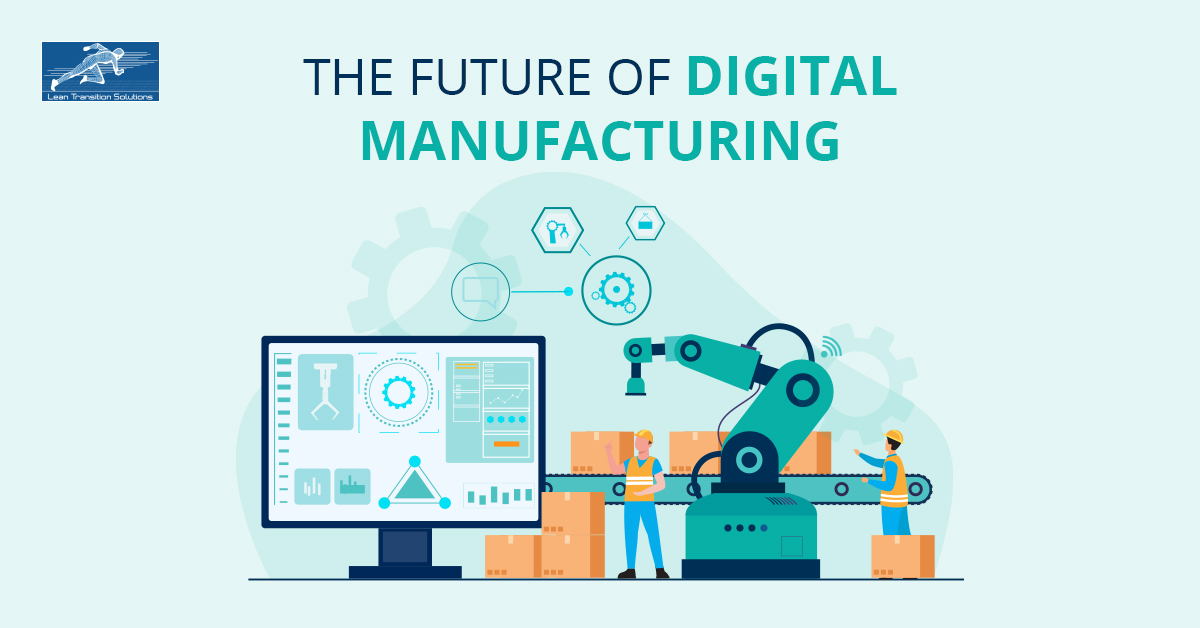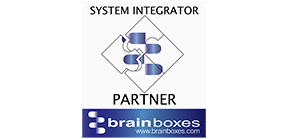The Future of Digital Manufacturing
- By Brett Griffiths
- Lean Technology
- May 18 , 2022
- Share

The Future of Digital Manufacturing
The digital revolution transitioned the world from mechanical and analogue technologies to digital technologies and is reflected in almost every advancing field. Digital Manufacturing has become a general term in the manufacturing sector and is ever-changing with upgrades in technology. So what exactly is digital manufacturing?
What is Digital Manufacturing?
Digital Manufacturing is the latest trend in manufacturing which mainly concentrates on using technological inclusions in the manufacturing industry, primarily revolving around a computer system. Digital Manufacturing technologies enable the manufacturers to create a virtual counterpart of the products even before they are produced, analysed and studied in real-time.
Digital manufacturing is a set of mechanisms that help in the data processing and analysis of the product's life cycle. It is the potential to integrate these digital data into the production process and use them for better and more innovative business operations. Digital manufacturing term includes the progress in the data storage and computational capabilities and the development of technologies like robotics, additive manufacturing, digital twins etc.
THREE DIMENSIONS OF DIGITAL MANUFACTURING
Digital manufacturing mainly has three main aspects, which can be summarised as
-
The Product Life Cycle: Through manufacturing and product servicing, digital manufacturing affects everything, including sourcing, production and service life. At every stage, digital data is used for the revisions in the specifications and deviations, which can have significant impacts on manufacturing and the product life cycle.
-
The Smart Factory: Smart factory involves using smart machines, sensors, and tools that can provide real-time information about the manufacturing process. It connects Operations Technology(OE) with Information Technology(IT) which allows for the analysis of the overall production data by allowing greater visibility of the production processes and understanding of the potential areas which need process improvement.
-
Value Chain Management: Digital manufacturing helps value chain management by minimising the resources and inventories while maintaining the quality of the product and enhancing customer satisfaction.
HISTORY OF DIGITAL MANUFACTURING
The history of digital manufacturing dates back to the 1960-70s with the invention of the Inventory control and Material Requirement Planning (MRP) systems. They used early computer algorithms to enhance the supply chain of the product. With time in the 1980s, digitalisation started invading the manufacturing sector, and the outcome was the introduction of Computer Integrated Manufacturing(CIM). CIM was used to sort the production procedures by determining the most efficient shop floor layout.
Computer-Aided Designing(CAD) helped in the prototyping stage of the production process and helped in enhancing productivity by reducing the time required for product development. It facilitated improvements in each step of the digital manufacturing era.
The 1990s saw the introduction of Computer Numerical Control(CNC), which bridged the gap between the conceptualisation and the realisation of the product in the manufacturing industry.
From this stage, digital manufacturing has gone far in technological advancements. Digital manufacturing today uses mainly Product Life cycle Management(PLM). By integrating the distinct digital manufacturing systems into it, the PLM system can increase the product's lifespan.
Digital manufacturing today encompasses the application of various technological advancements such as Big Data analytics, Artificial Intelligence (AI), Machine Learning (ML), Robotics, Additive manufacturing, and the Internet of Things(IoT).
Digital Twin driven manufacturing is another technological breakthrough that has become a familiar term in the industrial sector. Virtual factory replication and the virtual model of the product with the help of real-time data and analytics are done here.
Now let's have a look at some of the latest trends in digital manufacturing,
-
Industrial Internet of Things(IIoT): IIoT refers to a varied set of devices connected to the internet. They provide real-time information about the factory floor and enhance the industry's performance. They also use the data to study consumers' preferences, interests and supply chain management.
-
Big Data Analytics: Big Data refers to the large set of data containing a lot of information about the market trends, hidden patterns, consumer habits, preferences etc., and the analytics tools help analyse these patterns to project the demand forecasting and predictive maintenance schedules.
-
Cloud Computing: Cloud network allows the storage and management of files on the internet. Cloud manufacturing incorporates the resources into the cloud, which the manufacturers can access or update from anywhere. By incorporating resources like Enterprise Resource Planning(ERP), the cloud manufacturing process handles everything from designing to production to maintenance.
-
Advanced Robotics: It allows for the automation of advanced tasks. Advanced Robotics have the advantages of enhanced plant structures and processes, increasing productivity and flexibility in the factory and supply chain.
-
Additive Manufacturing: Additive Manufacturing is, also called 3D printing, creating an object by building one layer at a time. It uses Computer-Aided Designing (CAD) softwares to produce the 3D models of the objects. The instruction is given to add each layer during the successive stages, in contrast to the conventional method of removing layers and carving to get the desired object. It thus allows the production of distinctive and customisable products and production units.
-
Digital Thread and Digital Twins: This allows the manufacturer to have a real-time visual representation of the factory floor. While the Digital Twin can represent the products current position or the production system, the digital thread can record its lifetime or the design from its creation to its elimination. Both these can bring considerable benefits to the company.
Now that we have looked into the various trends in digital manufacturing, let's also see a few benefits that digital manufacturing can offer:
-
Increase operational efficiency through improved processes and the automated exchange of data
-
Predictive maintenance avoids costly breakdowns, improves quality testing, and analyses the products in real-time with visual analytics.
-
Making the maximum use of workstations is beneficial for the entire production line.
-
Smooth delivery and movement of the materials ensure a continuous flow and eliminate backups.
-
Collaborative Engineering, along with digital twin, helps speedy prototyping, virtual production cell configuration and digital product modelling.
-
Auditing real-time assets.
-
Ability to customise the dynamic consumer requirements.
-
Quicker turnaround at all levels of the value chain
So what is the future of digital manufacturing?
Almost every sector of life is transitioning into digitalisation, and the manufacturing industry is no exception. As the competition is high for the manufacturers, they are forced to update their technologies and go digital to remain in the market without being thrown out.
Digitisation has invaded everything from marketing strategy to the factory floor in the manufacturing sector. Digital Manufacturing, along with the help of the systems like Artificial Intelligence, robotics automation etc., keeps a large amount of data in the servers and analytical tools study that data to carry out the daily activities of the company and help them to compete in the market by predicting the customer behaviour.
Wiser are those who invest in digital capabilities today, and they will be able to add value to productivity improvements in the future.
Industrial Digital Technologies(IDT) will remain the key players in the manufacturing sector. Standard technologies like the Internet of Things, Robotics and Artificial Intelligence enable the manufacturing industry to carry out its vision of digital manufacturing. Though it can be doubtful as to the reduction in employment opportunities, studies also suggest that there will be a surge in the specialist roles that are needed in the implementation of these digital manufacturing technologies.
Though most companies have adopted and moved into the digital era, some companies still lack in the adoption of these technologies.
Digital Manufacturing in Industry 4.0
Industry 4.0 has integrated individual technologies into integrated systems and has connected and centralised the production system. It has helped incorporate the emerging technological improvement to deal with the global challenges created by digitalisation and the virtual technologies driven by real-time data interchange and flexible manufacturing, enabling customised production.
Digital manufacturing technology will be able to transform all these aspects of manufacturing into value chains, from the algorithms to address the supply chain logistics to the comprehensive visualisation of the product design, digital marketing, quality control and many aspects of manufacturing.
In short, the combined and integrated use and the possibility of the real-time application adds scope for future applications. However, not new technologies, combination, integration, improvement and joint use open up new challenges and opportunities. The technologies can affect the operational and organisational strategies to mould the future of the manufacturing sector.
Digital factories are the call of the hour.
Start Free Trial
LEAN TRANSITION SOLUTIONS
The Old Vicarage, Pershore Road, Upton Snodsbury, Worcester, Worcestershire, WR7 4NR, United Kingdom.
BLOG
Lean Transition Solution
-
Lean Industry 4.0 Solutions
- TITAN:Computerised Maintenance Management System
- Data Point:Computerised Balanced Scorecard
- Janus: Automated Shop-floor Data Capture System
- T-Card: Integrated Production Planning and Plant Level Execution System
- JDI: Maintenance Automation App
- Maximus: Integrated ERP System
- e-Contractor: Integrated In-house Contractor Management System
- Q-Point: Integrated Quality Management System
- Safety-Point: Integrated Health and Safety Management System
- Lean Assessment: Lean Audit and Assessment System
- Saisho: Lean 5S Audit and Assessment App
- Emergency Response App: To Manage Emergency Situations
-
Leadership 4.0 Solutions
- Your Career Academy(YCA): Learning and Development System
- YCA e-Learning : Management System
- MentorYou(MU): Mentoring App
- Leadership 4.0 : Leadership Transformation Program
- Lean Manufacturing Workshop
- Lean Manufacturing Consulting
- ILM Accredited Green Belt Training and Certification Program
- ILM Accredited Black Belt Training and Certification Program
- Software Development Service
- Resources
- Company
- Contact











